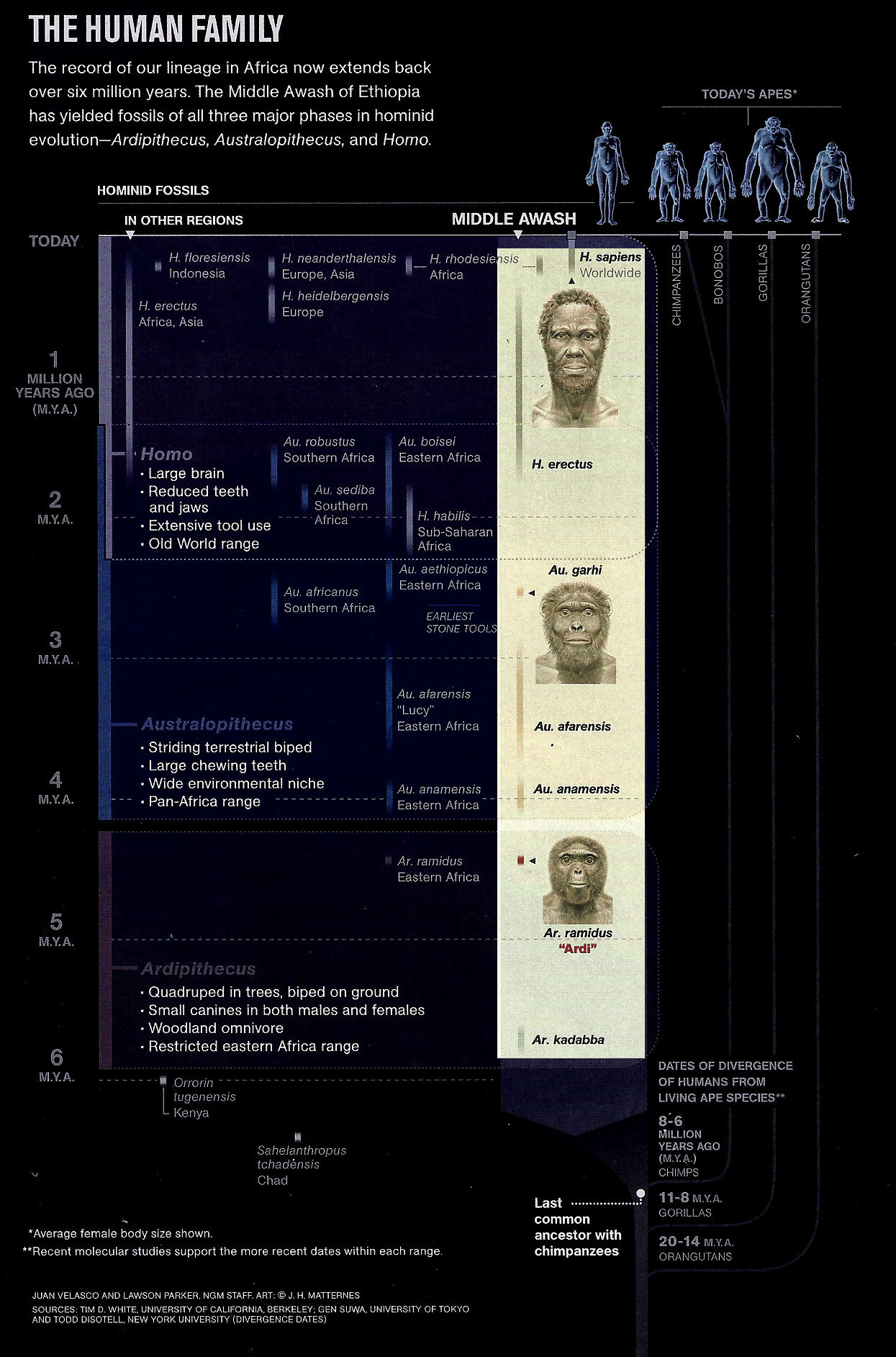What did the common ancestor of Humans and chimpanzees looked like? This is not something we can triangulate simply by looking at a modern chimpanzee and Human. All the evidence points that Africa is the home continent for primates. Paleontologists are working hard to find the fossils that help us understand the key stages in Human evolution.
Molecular genetic analysis of modern Human and chimpanzee revealed a very high degree of similarity. Through DNA hybridization experiments it was estimated that humans, chimpanzees, and gorillas shared a common ancestor only 5 million years ago. Sequencing of the genomes now confidently indicates that our common ancestry goes back to 7 million years before present. The 3.2 million year old Lucy (Australopithecus afarensis) fossil was already an upright bipedal walker. No other fossil was known before Lucy. Discovery of 4.4 million year old Ardipithecus ramidus fossil provided a a big insight into how bipedality in Humans started.
Fifteen years after its discovery in 1994 a special section including 11 manuscripts was published in Science Magazine in 2009.
Bipedality, tool making, big brains. Which one came first? Ardipethecus ramidus provided the mozaic anatomy of this most ancient Human ancestor ever. She was bipedal on the ground but had very good climbing abilities. Together with her other fossils found in the same age rock layer indicated that she was living in a wooded environment. Her feet morphology was quite striking in revealing all.
The etymology of the name Ardipethecus ramidus comes from two words. The word ‘ramid’ means ‘root’ in the Afar language of Ethiopia and refers to the closeness of this new species to the roots of humanity. The word ‘Ardi’ means ‘ground’ or ‘floor’.
Bipedality:



2 Comments